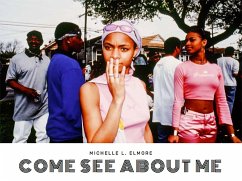New Orleans is so rich in culture. It's a necessity and important to document the inhabitants of New Orleans no matter how many people documented it before. The people in the monograph “Come See About Me” became my family. I knew everybody, and I did meaningful portraits for people on the street. They expected me to do their portrait, and they would come on Sundays with the family dressed nice, and I would do an on-the-spot family portrait in a huge crowd situation. They loved the process and would pay me five dollars the following week for the portrait. I made enough money on Sundays to support myself… and it gave me street credibility because no one else was bringing the pictures back to the people. They were taking (stealing) their pictures and never returning. The New Orleans people really loved my images and appreciated them. They hung them on their walls at home in recognition and celebration. They would always say: ‘Don’t Forget to Come See About Me.’
Hinweis: Dieser Artikel kann nur an eine deutsche Lieferadresse ausgeliefert werden.
Hinweis: Dieser Artikel kann nur an eine deutsche Lieferadresse ausgeliefert werden.








